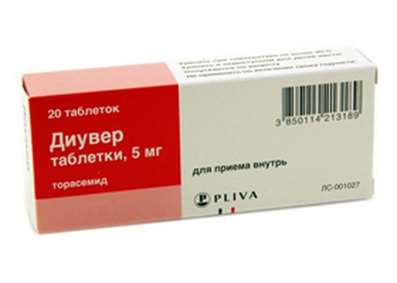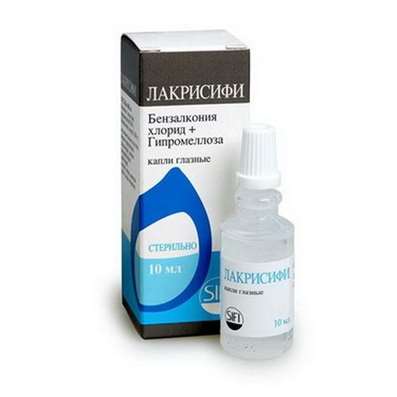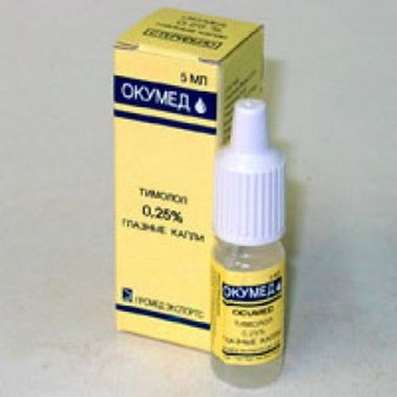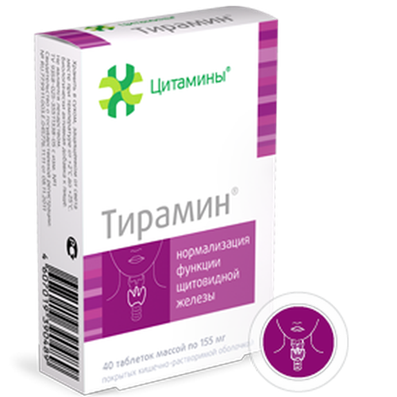Instruction for use: Zibor 3500
I want this, give me price
Dosage form: Solution for subcutaneous administration
Active substance: Bemiparinum natrium
ATX
B01AB12 Bemiparin
Pharmacological groups
Anticoagulant direct action [Anticoagulants]
The nosological classification (ICD-10)
I74 Embolism and arterial thrombosis: Thrombosis of effort (stress); Arterial thrombosis; Arteriothrombosis; Subacute and chronic arterial thrombosis; Subacute thrombosis of peripheral arteries; Postoperative thrombosis; Vascular thrombosis; Vascular embolism; Thrombosis of aortocoronary shunt; Arterial thrombosis; Thrombosis of arteries; Coronary artery thrombosis; Coronary thrombosis; Thrombosis of blood vessels; Thrombosis with ischemic stroke; Thrombosis with general surgical operations; Thrombosis in Oncology Operations; Vascular thrombosis; Thrombus formation in the postoperative period; Thrombotic complications; Thromboembolic diseases; Thromboembolic syndrome; Thromboembolic complication in the postoperative period; Thromboembolism of arteries; Partial vascular thrombosis; Embolism; Embolism of arteries
I82 Embolism and thrombosis of other veins: Recurrent venous thrombosis; Postoperative thrombosis; Venous thrombosis; Acute venous thromboembolism; Recurrent vein thrombosis; Venous thrombosis; Thrombosis of veins of internal organs; Venous thrombosis; Deep vein thrombosis; Thrombosis of blood vessels; Vascular thrombosis; Thrombosis of veins; Deep vein thrombosis; Thromboembolic diseases; Thromboembolism of veins; Severe venous thrombosis; Embolism; Embolism of veins; Thromboembolic complications
Z100 * CLASS XXII Surgical practice: Abdominal surgery; adenomectomy; Amputation; Coronary angioplasty; Angioplasty of the carotid arteries; Antiseptic skin treatment for wounds; Antiseptic Hand; Appendectomy; atherectomy; Balloon coronary angioplasty; Vaginal hysterectomy; The coronary bypass; Interventions in the vagina and cervix; Interventions on the bladder; Intervention in the mouth; Restoration and reconstructive surgery; Hand hygiene of medical personnel; Gynecologic surgery; Gynecological intervention; Gynecological surgery; Hypovolemic shock during operations; Disinfection of purulent wounds; Disinfection of wounds edges; Diagnostic intervention; Diagnostic procedures; Cervical Diathermocoagulation; Long-surgery; Replacing the fistula catheters; Infection in orthopedic surgery; Artificial heart valve; cystectomy; Short-term outpatient surgery; Short-term operation; Short surgical procedures; Krikotireotomiya; Blood loss during surgery; Bleeding during surgery and in the postoperative period; Kuldotsentez; laser photocoagulation; laser coagulation; retinal laser coagulation; Laparoscopy; Laparoscopy in Gynecology; CSF fistula; Small gynecological operations; Small surgical procedures; Mastectomy and subsequent plastic; mediastinotomy; Microsurgical operations on the ear; Mukogingivalnye operation; suturing; Minor surgery; neurosurgical operation; Immobilization of the eyeball in ophthalmic surgery; testectomy; pancreatectomy; Perikardektomiya; The period of rehabilitation after surgery; The period of convalescence after surgery; Percutaneous transluminal coronary angioplasty; Pleural thoracentesis; Pneumonia postoperative and posttraumatic; Preparation for surgical procedures; Preparation for surgery; Preparation of the surgeon's hands before surgery; Preparation of the colon for surgical procedures; Postoperative aspiration pneumonia in neurosurgical and thoracic surgery; Postoperative nausea; Postoperative bleeding; postoperative granuloma; postoperative shock; The early postoperative period; myocardial revascularization; Radiectomy; gastric Resection; bowel resection; uterine Resection; liver Resection; enterectomy; Resection of part of the stomach; Reocclusion of the operated vessel; Bonding tissues during surgical procedures; Removal of sutures; Condition after eye surgery; Condition after surgery; Condition after surgery in the nasal cavity; Condition after gastrectomy; Status after resection of the small intestine; Condition after tonsillectomy; Condition after removal of the duodenum; Condition after phlebectomy; Vascular surgery; Splenectomy; Sterilization of surgical instruments; Sterilization of surgical instruments; sternotomy; Dental surgery; Dental intervention in periodontal tissues; strumectomy; Tonsillectomy; Thoracic surgery; Thoracic surgery; total gastrectomy; Transdermal intravascular coronary angioplasty; Transurethral resection; Turbinektomiya; Removal of a tooth; cataract surgery; Removal of cysts; tonsillectomy; Removal of fibroids; Removing the mobile primary teeth; Removing polyps; Removing broken tooth; Removal of the uterus body; Removal of sutures; Fistula likvoroprovodyaschih ways; Frontoetmoidogaymorotomiya; Surgical infection; Surgical treatment of chronic limb ulcers; Surgery; The surgery in the anal area; The surgery on the colon; Surgical practice; The surgical procedure; Surgical interventions; Surgery on the gastrointestinal tract; Surgical procedures on the urinary tract; Surgical procedures on the urinary system; Surgical intervention of the genitourinary system; Surgical procedures on the heart; Surgical manipulation; surgery; Surgery on the veins; Surgical intervention; Vascular surgery; Surgical treatment of thrombosis; Surgery; cholecystectomy; Partial gastric resection; hysterectomy; Percutaneous transluminal coronary angioplasty; Percutaneous transluminal angioplasty; Coronary artery bypass; tooth Extirpation; Extirpation of milk teeth; pulpectomy; pulsative cardiopulmonary bypass; tooth Extraction; teeth Extraction; cataract extraction; Electrocoagulation; endourological intervention; episiotomy; Etmoidotomiya; Complications after tooth extraction
Z49.1 Aids that include extracorporeal dialysis: hemodialysis; Chronic hemodialysis; Extracorporeal circulation; Thrombosis of hemodialysis shunt
Composition
active substance: Beimiparin sodium (low molecular weight heparin sodium salt) 3500 IU antifactor-Xa
Excipients: water for injection - up to 0.2 ml
Description of dosage form
Transparent colorless or light yellow solution.
Characteristic
Bemiparin sodium (low molecular weight heparin sodium salt) - the active ingredient Zibor® 3500 - is obtained by depolymerization of sodium heparin secreted from the intestinal mucosa of pigs. The average molecular weight is 3000-4200 Dalton. The molecular weight distribution of beemiparin sodium is as follows:
- low-molecular fraction (no more than 2000 Dalton) - no more than 35%;
- fraction with a molecular weight (2000-6000 Dalton) - 50-75%;
- high-molecular fraction (not less than 6000 Dalton) - no more than 15%.
The antifactor-Xa activity of beemiparin sodium is 80-120 IU / mg, and the antifactor-IIa activity is 5-20 IU / mg in terms of dry matter. The antifactor-Xa / antifactor-IIa activity ratio is approximately 8.
Pharmachologic effect
Mode of action - Anticoagulant.
Pharmacodynamics
Bemiparin sodium is an anticoagulant of direct action and belongs to the group of low molecular weight heparins. Reduction of blood coagulability under the influence of sodium beimiparin is due to the fact that it increases the inhibitory effect of antithrombin III on a number of coagulation factors (Xa and to a lesser extent IIa).
Pharmacokinetics
Absorption and elimination of the drug are described by linear kinetics of the first order.
Absorption. After S.C. administration of sodium beimiparin is rapidly absorbed, bioavailability is 96%. The maximum antifactor-Xa activity in blood plasma when the drug is administered in prophylactic doses - 2500 and 3500 ME - is achieved after 2-3 hours with peaks of activity of the order of (0.34 ± 0.08) and (0.45 ± 0.07) ME Antifactor-Xa / ml, respectively. Antifactor-IIa activity when administered the drug in the above doses is not detected.
The maximum antifactor-Xa activity in plasma when the drug is administered at therapeutic doses - 5000, 7500, 10000 and 12500 ME - is achieved after 3-4 hours with peaks of activity of the order of (0.54 ± 0.06); (1.22 ± 0.27); (1.42 ± 0.19) and (2.03 ± 0.25) ME antifactor-Xa / ml, respectively. Antifactor-IIa activity of the order of 0.01 IU / ml was detected with the administration of the drug in the following doses: 7500, 10000 and 12500 ME.
Elimination. With the administration of beemiparin sodium at a dose of 2500-12500 ME T1 / 2 is about 5-6 hours, so the drug is prescribed 1 time per day. At present, there are no data describing the ability of sodium bemiparin to bind to plasma proteins, its metabolism and excretion in humans.
Indications for Zibor 3500
Prevention of thromboembolism in patients with general surgical interventions and orthopedic operations;
Prevention of thromboembolism in patients with a high or moderate risk of thrombosis (without surgery);
Secondary prevention of relapses of venous thromboembolism in patients with deep vein thrombosis and transient risk factors;
Preventive maintenance of coagulation of blood in system of an extracorporeal circulation at carrying out of a hemodialysis.
Contraindications
Hypersensitivity to bemiparin sodium, heparin or products of processing organs of pigs;
Confirmed thrombocytopenia or suspicion of thrombocytopenia, immunologically due to heparin, in anamnesis;
Active bleeding and bleeding disorders;
Severe violations of the liver and pancreas;
Trauma or surgery in the field of the central nervous system, eyes and hearing;
DIC syndrome in the framework of heparin-induced thrombocytopenia;
Acute bacterial endocarditis and protracted endocarditis;
Organic disorders with an increased risk of bleeding (active peptic ulcer, hemorrhagic stroke, cerebral aneurysm or cerebral neoplasia);
childhood.
With caution: hepatic or renal insufficiency; Uncontrolled arterial hypertension; Peptic ulcer of the stomach and duodenum in the anamnesis; urolithiasis disease; Diseases of the iris and retina; When carrying out spinal or epidural anesthesia and / or lumbar puncture.
Pregnancy and breast-feeding
Due to the lack of reliable clinical data confirming the safety of the drug during pregnancy, Zibor® 3500 should be used during pregnancy only if the intended benefit for the mother exceeds the possible risk to the fetus.
It is not known whether the drug is excreted in breast milk, so if you need to use Zibor® 3500 during lactation, breastfeeding for the period of taking the drug should be discontinued.
Side effects
The most commonly reported side effect is hematoma and / or ecchymosis at the injection site (approximately 15% of patients).
Long-term therapy with heparin can lead to the development of osteoporosis.
The frequency of side effects in the administration of bemiparin sodium corresponds to that of other low molecular weight heparins, and is given below.
Very often (≥1 / 10) - the ecchymosis at the injection site.
Often (≥1 / 100, <1/10) - hematoma and pain at the injection site, bleeding (in the area of the skin, mucous membranes, wounds, gastrointestinal tract, genito-urinary tract), an easy transient increase in the level of transaminases (ACT, ALT) and GGT.
Infrequent (≥1 / 1000, <1/100) - skin allergic reactions (urticaria, pruritus), mild transient thrombocytopenia of type I (see "Special instructions").
Rarely (<1/1000) - anaphylactic reactions (nausea, vomiting, fever, dyspnea, bronchospasm, laryngeal edema, hypotension, urticaria, pruritus), severe type II thrombocytopenia, skin necrosis at the injection site, epidural and spinal hematoma after epidural or spinal Anesthesia or lumbar puncture (see "Special instructions").
Interaction
Bemiparin sodium should not be mixed in the same container with other preparations for parenteral administration.
It is not recommended simultaneous administration of sodium beimiparin with vitamin K antagonists and other anticoagulants, acetylsalicylic acid and other salicylates and NSAID, ticlopidine, clopidogrel and other platelet aggregation inhibitors, systemic GCS and dextran in connection with potentiation of pharmacological action of sodium bemiparin and an increased risk of bleeding. In case of inevitable appropriate combination therapy, beemiparin sodium should be used under careful clinical and laboratory control.
Simultaneous use of drugs that increase the concentration of potassium in the serum, also need to be done only under close medical supervision.
The use of bemiparin sodium, as well as other drugs of heparin, simultaneously with nitroglycerin for IV administration leads to a decrease in the effectiveness of the anticoagulant.
Dosing and Administration
SC (subcutaneous).
General surgical interventions with a moderate risk of venous thromboembolism. On the day of surgery, 2500 ME antifactor-Ha is administered 2 hours before or 6 hours after the operation. In the following days, 2500 ME antifactor-Xa are injected every 24 hours.
Orthopedic surgery with a high risk of venous thromboembolism. On the day of surgery, 3500 IU of the antifactor-Ha are administered 2 hours before or 6 hours after the operation. In the following days, 3500 IU of antifactor-Xa are injected every 24 hours. To perform this dosage regimen, it is necessary to use Zibor® 3500 preparation.
Prophylactic treatment should be performed at the doctor's prescription for at least 7-10 days after surgery until the risk of thromboembolic complications decreases or until the patient is fully mobilized.
Prevention of thromboembolism in patients without surgery. The recommended daily dose of sodium beemiparin is 2500 or 3500 IU, depending on the degree of risk of thromboembolism.
Preventive treatment should be performed as directed by the doctor during the period of risk of thromboembolic complications or until the patient is fully mobilized.
Secondary prevention of relapses of venous thromboembolism in patients with deep vein thrombosis and transient risk factors. Bemiparin sodium can be administered at a daily dose of 3,500 IU to patients receiving anticoagulant treatment for deep vein thrombosis with pulmonary embolism or without it, as a therapeutic alternative to oral anticoagulant treatment, or in those cases where the latter are contraindicated. Duration of treatment - no more than 3 months.
Prevention of blood clotting in the system of extracorporeal circulation during hemodialysis. In patients who are on repeated hemodialysis with a duration of sessions of no more than 4 hours, provided there is no risk of bleeding, prevention of blood coagulation in the extracorporeal circulation system during hemodialysis is achieved by introducing a single dose in the form of a bolus injection of the drug into the arterial bed at the beginning of the dialysis session. A single dose for patients weighing less than 60 kg is 2500 ME, for patients with a body weight of more than 60 kg - 3500 ME.
Correction of doses for elderly patients is not required.
Data allowing to give recommendations on the correction of doses of bemiparin sodium for patients with impaired liver and kidney function are not available.
Method of application (technique of subcutaneous injection). Syringes are ready for immediate use and do not require sterilization. The drug is injected into the subcutaneous fat layer of the anterolateral region of the abdomen or posterolateral region of the waist (waist), alternately from the right and left. The needle is introduced to the full depth perpendicularly (vertically), and not at an angle, into the fold of the skin formed by the thumb and forefinger. Skin fold is not straightened, keeping it until the injection is complete. Place the injection does not rub!
Overdose
Symptoms: possible manifestations of hemorrhagic syndrome.
Treatment: minor bleeding rarely requires special treatment; Significant (risk of thrombosis) - may require the appointment of protamine sulfate (protamine sulfate leads to a partial decrease in the antifactor-Xa activity of bemiparin sodium for 2 hours after iv injection at a dose of 1.4 mg / 100 IU antifactor-Xa).
Special instructions
Bemiparin sodium cannot be administered I.M..
To avoid the risk of developing hematomas during the period of therapy with Zibor® 3500, you should not use the IM route of administration for other medications.
Different low molecular weight heparins do not always have equivalent activity, therefore, for each drug of this class, it is necessary to observe a specific dosage regimen and method of administration.
Bemiparin sodium, like other low molecular weight heparins, can suppress the adrenal secretion of aldosterone, which can lead to hyperkalemia, especially in patients with diabetes mellitus, chronic renal failure, previous metabolic acidosis, increased potassium concentration in plasma, or in patients taking potassium-sparing drugs. The risk of developing hyperkalemia increases in proportion to the duration of therapy, but this hyperkalemia is usually reversible. In patients at risk, before starting therapy with Zibor® 3500, plasma electrolytes should be determined and the relevant parameters monitored regularly during treatment, especially if the duration of therapy with the drug is more than seven days.
In rare cases, at the beginning of heparin therapy, mild transient thrombocytopenia of type I is observed (the number of platelets is 100,000-150000 / mm3), associated with the temporary activation of platelets (see "Side effects"). As a rule, this condition does not cause complications and does not require discontinuation of therapy with Zibor® 3500.
In rare cases, with heparin therapy, severe type II thrombocytopenia develops with platelet counts well below 100,000 / mm3 (see "Side effects"). This reaction usually occurs between the 5th and 21st days of therapy. In patients with heparin-induced thrombocytopenia in history, this complication can develop at an earlier time.
It is recommended to count platelets before starting therapy with Zibor® 3500, on the first day of therapy, then regularly at 3-4-day intervals and at the end of therapy with the drug. In the case of a significant reduction in the number of platelets (30 to 50%), combined with positive or unknown results of in vitro studies for the presence of antiplatelet antibodies in the presence of sodium beimiparin or other low molecular weight heparins and / or heparins, Zibor® 3500 should be discontinued immediately and an alternative treatment.
As with the appointment of other heparins, with the use of bemiparin sodium, there were cases of skin necrosis, sometimes with the preceding reddening or painful erythematous spots (see "Side effects"). In such cases, therapy with Zibor® 3500 should be discontinued immediately.
The prophylactic use of heparin in combination with epidural or spinal anesthesia or lumbar puncture in rare cases can lead to the development of epidural or spinal hematoma, which can lead to prolonged or persistent paralysis (see "Side effects"). The risk of developing a hematoma increases with the use of an epidural or spinal catheter for anesthesia, with the concomitant use of drugs that affect blood clotting, such as NSAIDs, platelet aggregation inhibitors or anticoagulants (see "Interaction"), as well as traumatic or repeated puncture.
When deciding on the time interval between the last administration of heparin in the prophylactic dose and the introduction or removal of the epidural or spinal catheter, it is necessary to take into account the characteristics of the preparation and the profile of the patient. After removal of the catheter, the next dose of sodium bemiparin can be administered no earlier than 4 hours and only after the completion of the surgical procedure.
When deciding whether to prescribe anticoagulant therapy in the context of epidural or spinal anesthesia, extreme care must be taken, including frequent monitoring to detect signs and symptoms of neurological disorders such as back pain, sensitivity and motor impairment (numbness and weakness of the lower extremities), and Also dysfunction of the intestine and bladder. The average medical personnel should be trained to identify these signs and symptoms. Patients should be instructed to immediately inform nurses or physicians if these symptoms occur.
If an epidural or spinal hematoma is suspected, an urgent diagnosis should be made with the adoption of therapeutic measures, including medullary decompression.
Influence on the ability to drive vehicles and control mechanisms. The drug does not affect the ability to drive vehicles and control mechanisms.
Release form
Solution for subcutaneous administration, 2500 IU. For 0.2 ml of the drug in a HYPAK® SCF® syringe made of borosilicate glass (type I, Hept. F.) with a nominal capacity of 0.5 ml.
2 syringes in a planar cell package (blister). For 1, 5, 15 or 50 blisters in a cardboard bundle.
Manufacturer
The owner of the Registration Certificate: ZAO Berlin-Pharma, Russia.
Manufacturer: "ROVI Contract Manufacturing Management SL", Spain.
St. Julian Camarillo, 35, 28037 Madrid, Spain.
Issuing control: "Laboratorios Pharmaceuticos ROVI SA", Spain.
St. Julian Camarillo, 35, 28037 Madrid, Spain.
Distributor company: Berlin-Chemie / Menarini Pharma GmbH, Germany.
Address for making a claim: 123317, Moscow, BC "Tower on the Embankment", Block B.
Conditions of supply of pharmacies
On prescription.
Storage conditions of the drug Zibor 3500
At temperatures not higher than 30 ° C (do not freeze).
Keep out of the reach of children.
The shelf life of the drug Zibor 3500
2 years.
Do not use beyond the expiration date printed on the package.

 Cart
Cart





